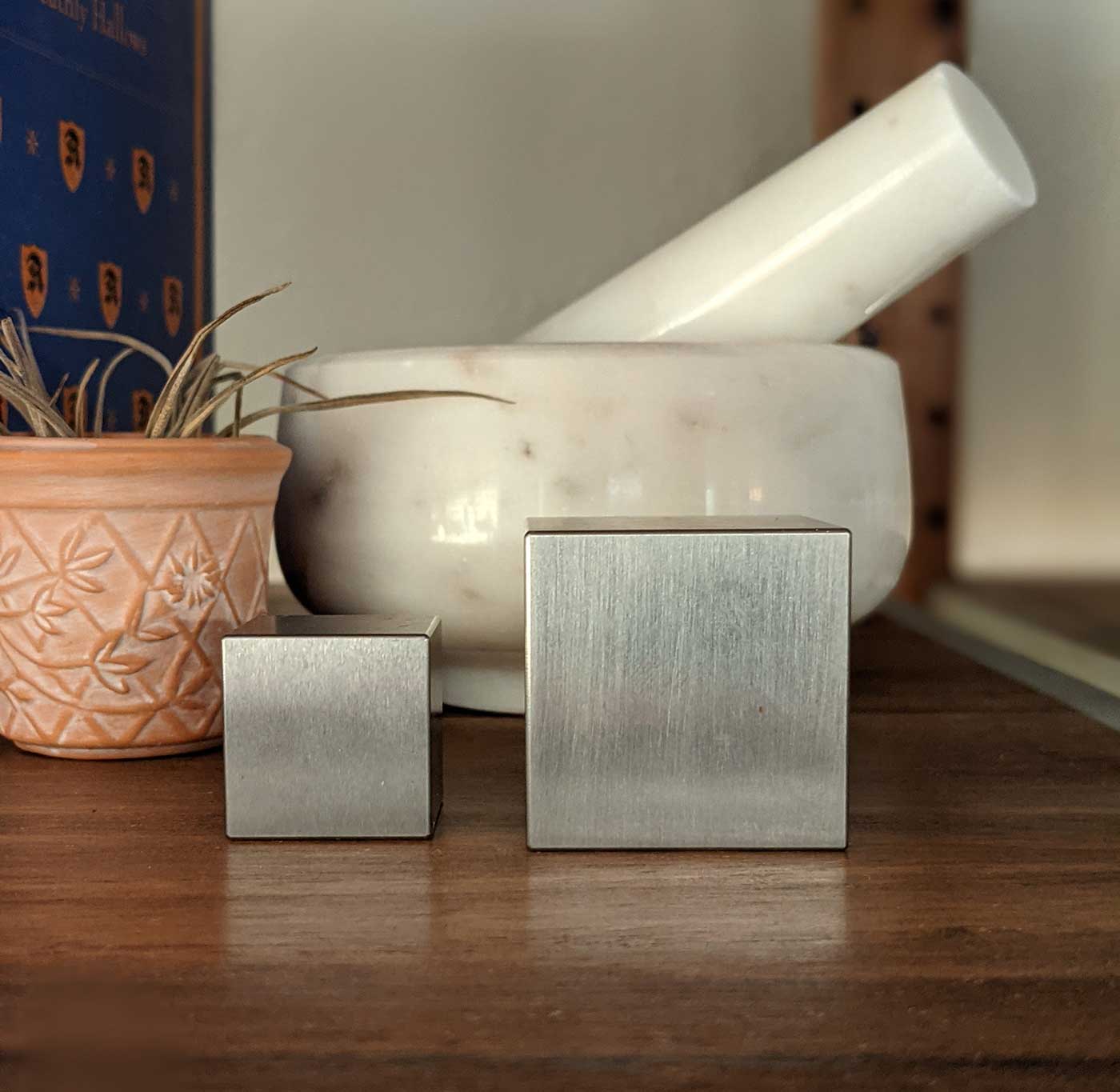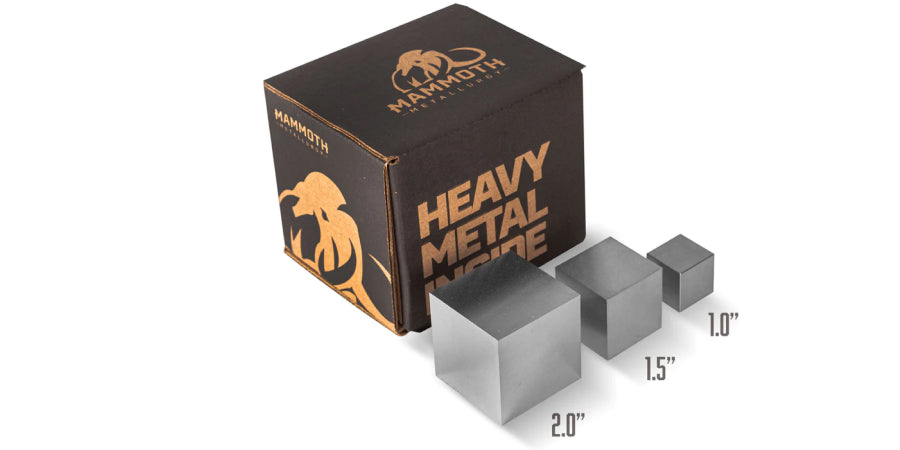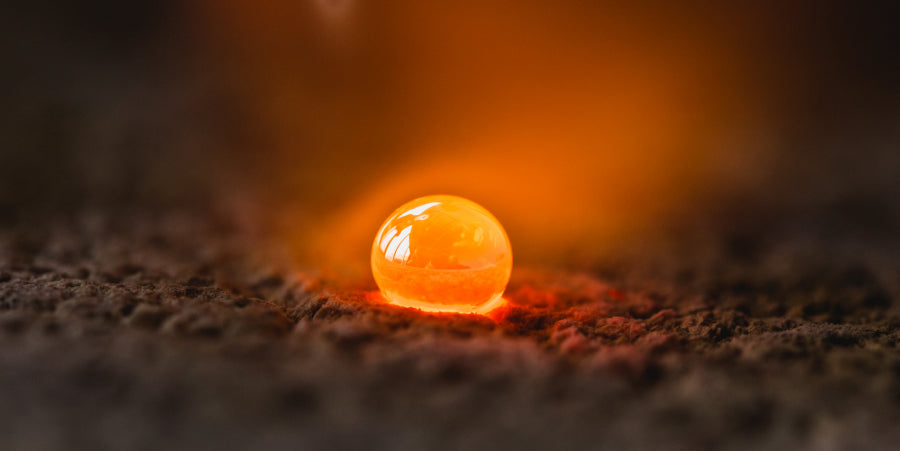
Tungsten cubes are getting popular with time, and there are hundreds of online searches surrounding these solid blocks. Many people are searching to find out what these heavy cubes are, why they are so popular, and their manufacturing process. Some people may be interested in buying these beautiful cubes.
The tungsten cube looks beautiful as it goes through a process and has a stunning finish. When tungsten is in raw form, it has a dark gray color, but after going through the machining process, the tungsten cube becomes reflective and bright.
Let’s find the answers to these questions and get a clear idea about the making of the tungsten cubes and what industries use them to develop other valuable products.
The Process to Make Tungsten Cube
An alloy named Tungsten carbide converts into tungsten (VI) oxide (WO3) that mixes with an equal amount of powdered tungsten and carbon through a heating process. It creates powder as a result, and it is easy to press and mold it into different shapes like cubes, rings, and bucking bars.
It has the highest melting point, and it also mixes with powdered nickel or other metals. Most tungsten materials help to produce other hard materials. At the same time, less than 10% of the remaining component is helpful in chemical compounds. The remaining part of the tungsten is valuable for alloys and steels. It has a high temperature for transition.
Nevertheless, another alternative for manufacturing is selective laser melting. It is a part of 3D printing and develops three-dimensional shapes.
Production of Tungsten in different Countries
Researchers state that the world has tungsten present in abundance, almost 3,200,000 tons. Most of the material is in China, Russia, Vietnam, and Bolivia. While Canada stopped producing tungsten in late 2015 because of the closure of its only tungsten mine. In the 2010s, Vietnam had significant production of tungsten as it optimized its domestic refining operations.
China is at the top when it comes to the production and export of tungsten products, including cubes. The products are high in demand, so its production has increased in several other countries too. The Chinese government strictly regulates the supply of tungsten and has regulations against illegal mining and excessive pollution due to mining and refining processes in China.
Other Uses of Tungsten
In addition to making solid cubes, tungsten has extensive use in other industries as well. It is helpful to make electrodes, field emitters, and heating elements. It is also useful as the filament in light bulbs and cathode ray tubes. Moreover, it has another common use in alloys like steel.
Use of Tungsten in Industries
One of the significant uses of tungsten is to produce hard materials based on tungsten carbide (WC). Carbide tooling is a metal/ceramic composite, and metallic cobalt acts as a matrix material to hold the WC particles in one place. It is an effective electrical conductor. It produces wear-resistant abrasives and “carbide” cutting tools, including drills, circular saws, and knives, milling, and turning tools. In addition, it has extensive use in metalworking, woodworking, petroleum, mining, and construction industries.
Besides the above-mentioned industries, tungsten is also used in the jewelry industry for making rings of sintered carbide, metallic tungsten,and tungsten carbide/metal composites.Moreover, jewelers use nickel as the metal matrix in WC metal composite rings instead of cobalt because it is shinier. Since the tungsten carbide is hard, rings are abrasion-resistant. Nevertheless, tungsten carbide rings are brittle, and they tend to crack due to several reasons.
Use of Tungsten in Alloys
Apart from its industrial use, it has practical uses because of its hardness and heat-resistance quality. One example is high-speed steel that consists of about 18% tungsten. However, tungsten has a high melting point, increasing its use in manufacturing rocket nozzles like the UGM-27 Polaris submarine-launched ballistic missile. In addition, tungsten alloys have a wide range of applications, including the aerospace, automotive industries and radiation shielding. Besides, some superalloys that comprise tungsten like Hastelloy and Stellite play an essential role in turbine blades and wear-resistant parts and coatings.
Moreover, its heat-resistance quality makes it useful in arc welding applications when mixed with other highly-conductive metals like copper and silver. In other words, silver and copper also play a role in providing necessary conductivity, and the tungsten enables the welding rod to stay firm against the high temperature of the arc welding.
Use of Tungsten in Permanent Magnets
One of the main applications of tungsten steel is producing hard permanent magnets because of its high coercivity. Metal and alloy’s magnetic properties are highly responsive to microstructure.
Use of Tungsten in Military
Tungsten, which usually combines and alloys with iron, nickel, or cobalt to produce heavy alloys, is also used in kinetic energy penetrators. It is the best alternative to depleted uranium. The most common examples are ordinary small arms bullets designed to penetrate body armor. In addition, tungsten alloys are common in use in shells, missiles, grenades, etc.
Tungsten became popular in World War II to produce shells for anti-tank gun designs. These weapons were quite efficient to use, but a shortage of tungsten used in the shell core limited their use. Moreover, tungsten is used in Dense Inert Metal Explosives to minimize the collateral damage and increase the lethality of explosives within a small radius.
Use of Tungsten in Electronics
Apart from other applications, tungsten plays a significant part in many high-temperature applications, including incandescent light bulbs, heating elements, cathode-ray tubes, vacuum tube filaments, and rocket engine nozzles.
Due to its high melting point, tungsten is appropriate for aerospace and other high-temperature uses, including welding applications, electrical, and heating. All metals have tight metallic bonds, and it ensures their durability and density. But tungsten is distinctive and is a standalone metal that is not likely to break easily.
Bottom Line
After knowing the making process of tungsten cubes, their chemical properties, and their extensive usage across different industries, you may be thinking of buying a tungsten cube yourself. You can find quality tungsten cubes at Mammoth Metallurgy. We have a large variety of tungsten cubes in different sizes and shapes, including desktop tungsten cubes.
Sources
https://en.wikipedia.org/wiki/Tungsten#Chemical_compounds
https://www.mining.com/web/theres-enough-tungsten-to-make-over-35-million-cubes-each-year/


